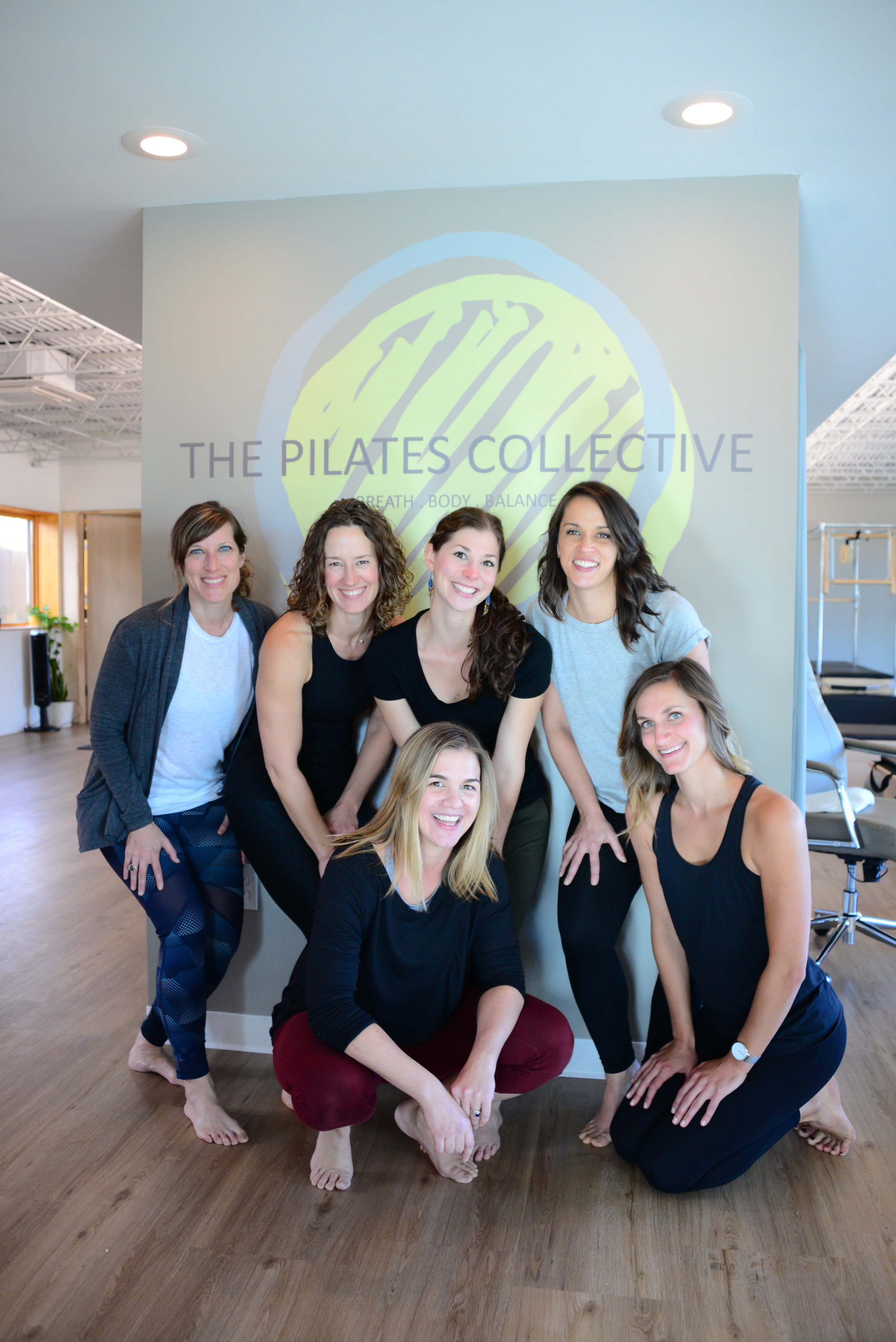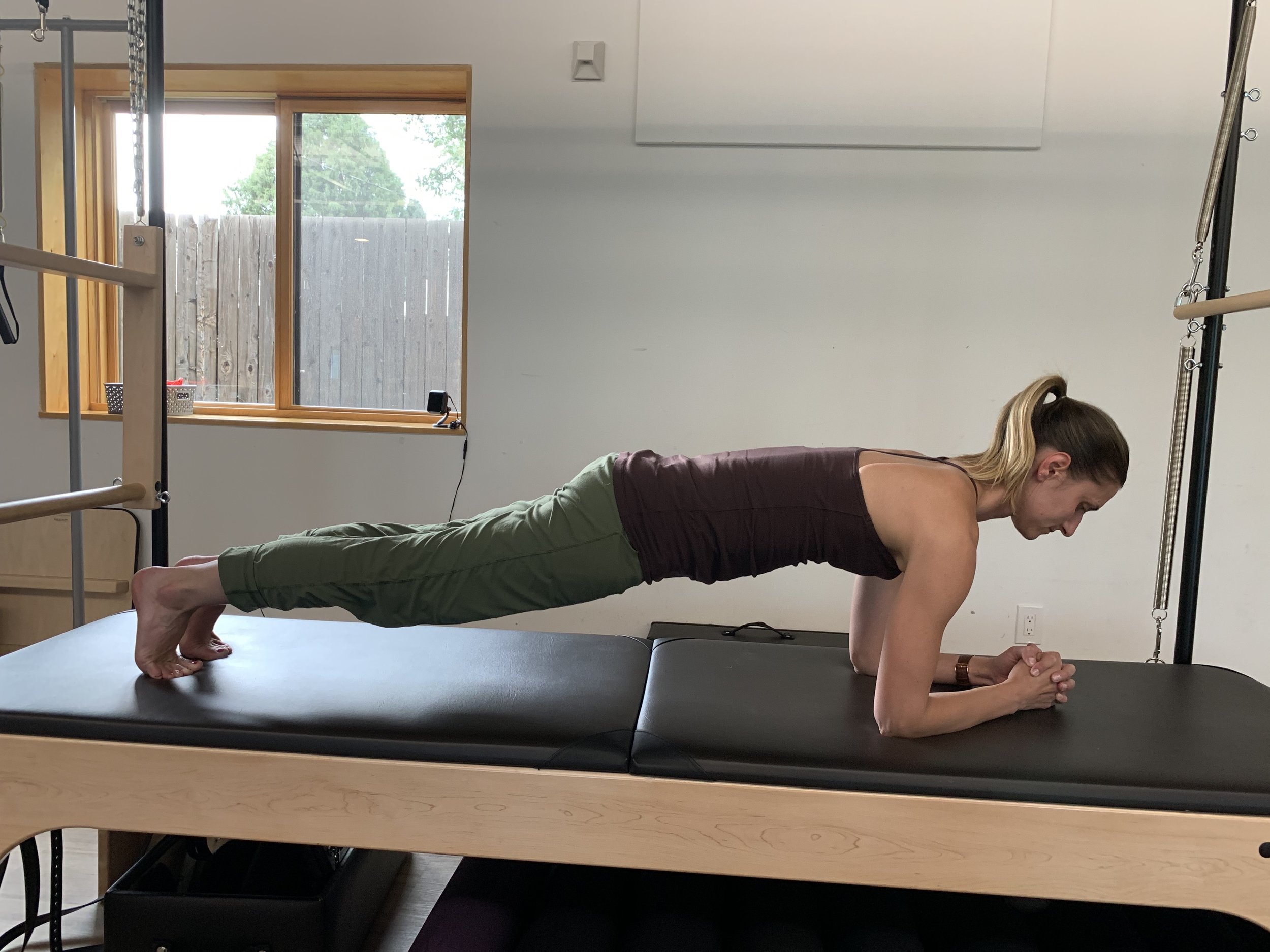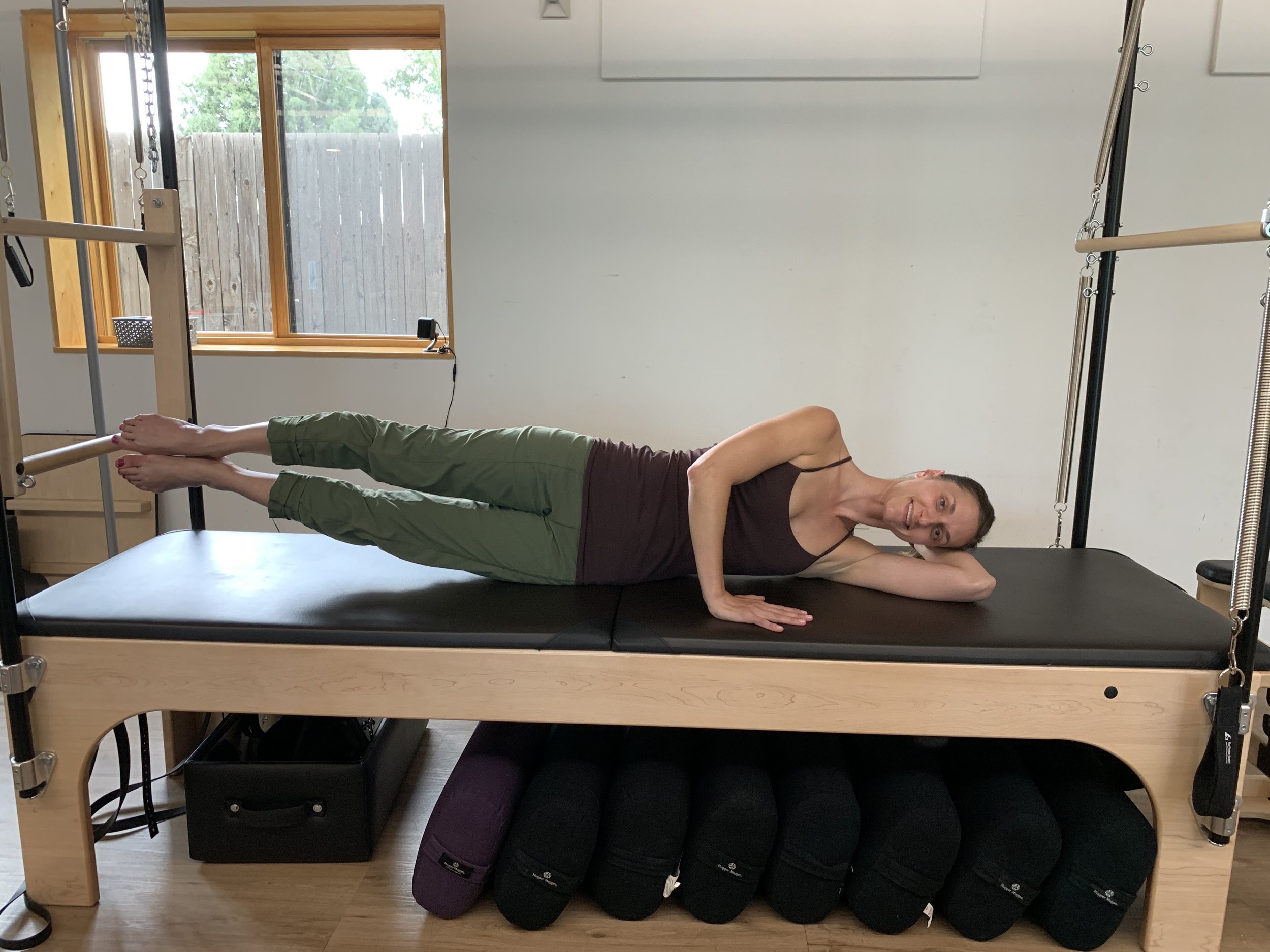How We Define Pilates at Pilates Collective
The popularity of Pilates has skyrocketed in recent years. It’s gone from an obscure workout to one that’s widely recognized and practiced around the world. We’ve talked about how Pilates started—you can read all about its origins in this blog—but a lot has changed since that time.
From Joseph Pilates’ original teachings, several schools of thought emerged, each from one of Joseph’s original students. These “first generation” Pilates instructors are known as the Pilates elders, and have carried on his teachings, each with their own unique twist. Their styles have given rise to the various methodologies of Pilates training and certification that you see in studios today. No one school of thought is better than another; they are each simply divergent interpretations of Joseph Pilates’ original ideas.
The teachers at Pilates Collective have been trained in an array of these styles, and come from diverse movement backgrounds. Many were or are dancers. Some have supplementary education such as a certificate in Pilates for Multiple Sclerosis, experience working with teenagers, or a specialization in the feet. Others are massage therapists in addition to being Pilates instructors. All of this culminates in a studio rich in variety and innovation, a space where instructors are constantly learning and evolving their skillsets.
Despite this variance in style and training, there are a few Pilates principles we all agree on at Pilates Collective.
Sustainable Movement is Key
Our definition of sustainable movement is something you can do when you’re 80 (and beyond). Many intense workouts—such as bootcamp or HIIT classes—may be great for losing weight or building bulk, but you likely won’t see many people over age 50 doing them. We offer movement that is moderate and versatile. It’s designed to build strength and optimize the way your body functions to prevent injury and overuse.
The younger you are when you start doing Pilates, the more your body will thank you—though it’s never too late.
A Pilates Body is a Balanced Body
Pilates is best known for abdominal exercises. They are certainly part of the repertoire, but there’s far more to it than that. Joseph Pilates spoke about developing each muscle in the body equally to encourage optimal functioning. This encourages muscles to support each other, decreasing risk of injury or overuse.
Alignment is the Goal
The ultimate goal of Pilates is to encourage optimal alignment and reinforce the natural curves of the spine. We do this by strengthening deep muscles close to your skeleton, many of which aren’t even visible from the outside. Because these muscles are so internal, some of the movements you do in Pilates may not look like much. In some cases, someone watching might not even be able to tell you’re moving!
As unimpressive as they may look, these subtle, nuanced movements allow your musculature to support your skeleton. This ties right into sustainability: the stronger those supporting muscles are, the more stable and resilient your body will be.
We Depend on the Mind-Body Connection
As Joseph Pilates said, “It is the mind itself which shapes the body.”
Pilates depends entirely on the mind-body connection. Because we work with those deeply internal muscles, many of which we can’t even see, we rely on focus, breath, and imagery. This means Pilates can be as intense mentally as it is physically. It’s not the type of workout where you can zone out and just go through the motions.
We think that’s a good thing: this level of focus can be meditative and allows you to foster a deep connection with your body. Understanding your physicality from the inside out can be a profoundly moving and empowering experience. When you understand the way your body functions, you appreciate it in a different way. Gradually, you may measure your body less for what it looks like and more for all it can do. This aspect is exactly why we think of Pilates as a workout for people who don’t like to work out: you’re not grinding through reps, but moving intentionally and with focus.
It’s All About What’s Best for You
We don’t have a standard formula for a class or session. Our definition of Pilates is fluid and intended to provide whatever you need on any given day. We offer modifications, props, and options for making an exercise more or less challenging. Sometimes teachers even start class by asking what you need to work on that particular day.
One of the most beautiful things about Pilates is its versatility: it can resemble a physical therapy session (and indeed is sometimes what your PT recommends after you finish with him/her), weight lifting at the gym, or a cardio boost (particularly on the jumpboard).
Neutral Spine & Neutral Pelvis
Whether you take Pilates at Pilates Collective or any other studio, there’s one concept you’ll need to understand: neutral spine.
The term ‘neutral spine’ refers to the natural and optimal alignment of your spine. A healthy spine has three primary curves; you can read all about them in this blog. Various lifestyle and genetic factors may compromise the health of the spine, and Pilates is ideal for reinforcing the musculature that keeps them in place.
A great way to find neutral spine is by lying on the ground with your knees bent and your feet flat on the floor. Notice what areas of your spine are weighted heavy into the floor. In a spine with healthy curves, it’s the back of the head, the mid-back, and the pelvis. Your lower back may be touching the floor, but ideally it is not weighted as heavily as your pelvis. This is your neutral spine and neutral pelvis position.
Now draw your navel towards your spine, engaging your abdominals and pulling your lower back down into the floor. As you do this, you should feel your tailbone and pubic bone start to tip up towards the ceiling. This is your imprinted or tucked pelvis, another position your Pilates instructor may reference often.
5 Basic Pilates Exercises
If you want a taste of Pilates before you get into the studio, here are 5 basic exercises we recommend.
*If you have pain or injury in your lower back, neck, or spine, please consult a doctor before trying these exercises on your own.
1) Pilates bridge
The Pilates bridge is a building block exercise you’ll likely do frequently in classes. Lay on your back with your knees bent and your feet flat on the floor. Find your neutral spine and neutral pelvis position (as described above). Take an inhale here.
On your exhale, find your tucked or imprinted pelvis, pulling your navel towards the floor and lifting your tailbone up towards the ceiling. Continue peeling the spine off the floor one vertebrae at a time. As you do this, press into your feet, sending your knees forward over your toes. This should engage your quads (the muscles on the front of your thighs) and your glutes (your butt muscles). Anchor your arms down into the mat with your shoulders away from your ears to engage your upper body muscles as well.
Roll up until there is a straight line extending from your shoulders to your knees. Unlike a yoga bridge, a Pilates bridge does not encourage you to tuck your shoulders underneath you or let your ribs open. Our goal with a bridge is alignment rather than chest opening.
If it feels ok for your lower back, try to find a neutral pelvis at the top of your bridge. Take an inhale there, and exhale as you roll back down through the spine, starting with your cervical spine and setting your tailbone down last.
There are many Pilates bridge variations that might include props, pulses, lifting one leg at a time, or anything else your teacher can think up!
2) Forearm plank
A plank, and specifically a forearm plank, is one of the best full-body exercises out there. Better still, you can do it anywhere with no equipment necessary.
Prepare for your forearm plank by kneeling and bringing your forearms to the floor. You can either have your hands flat and your forearms parallel to each other like the number 11, or you can clasp your hands together so your arms make an upside-down V, as Melissa is doing in this photo. Make sure your elbows are underneath your shoulders, not behind them.
When you’re ready, extend your legs behind you. You should be on the balls of your feet with all of your leg muscles engaged. Think of going into a slight tucked pelvis here to protect your lower back from overworking. Avoid sinking into your shoulders in your forearm plank by raising the space between your shoulder blades up towards the ceiling slightly. And breathe, breathe, breathe.
3) Pilates swan prep
This is a great exercise for opening up the front of the body and undoing all the forward postures we find ourselves in throughout the day.
To do a Pilates swan prep, lay on your belly with your palms next to your shoulders. Separate your legs slightly to protect your lower back and spread your fingers apart. Press your palms into the floor as you engage your abdominals, feeling your belly lift away from the floor and your pubic bone press into it. On an inhale, lift your sternum, letting your head come with you. Think about widening through the collarbones and shrugging your shoulders away from your ears.
Exhale to lower down. Reset by finding that engagement in the belly again, then inhale to lift. See if you can lift up a little higher each time, pressing your palms into the floor for support. Notice in the photo how Melissa keeps her head in line with her spine; looking down and slightly forward helps you to do this.
4) Side-lying leg lifts
Side-lying leg lifts are great for strengthening your obliques, inner thighs, and outer thighs all at once. Find a side-lying position by laying on your right side with your right arm under your head. Press your left palm into the floor in front of your chest to give yourself support. Make sure your left shoulder stays away from your ear.
As you press your left palm into the floor, feel the right side of your waist lift away, creating a “mouse house” as many teachers call it. The idea is to find a neutral spine in alignment as if you were standing, rather than letting the right side sink into the floor. Engage your abdominals to hold this position and maintain a neutral pelvis as well.
Glue your legs together. On an exhale, lift both legs up off the floor. Inhale to lower your legs down to tap the floor, but don’t rest them down. Exhale to lift again. Do about 10 before relaxing and switching to the other side. Only lift as high as you can without compromising your neutral spine and pelvis.
5) Upper body curl
If your neck is healthy and free of injury, try the upper body curl. This is the foundation for many of the upper abdominal exercises you’ll do in a Pilates class.
Laying on the floor with your knees bent and your feet flat, interlace your fingers behind your head. Lift your elbows slightly off the floor so your shoulders slide away from your ears. Maintain a neutral spine and neutral pelvis.
On an exhale, nod your chin into your chest, using your hands to help you to prevent straining your neck. Once your chin is towards your chest, continue lifting your upper spine, aiming to lift to the bottoms of your shoulder blades. Inhale to lower back down, reversing the movement you did on the way up.
To truly target the upper abdominals in this exercise, be sure to maintain a neutral pelvis throughout.
We hope these basic Pilates exercises give you a taste of what to expect in the studio. If you’re new to Pilates Collective, contact us to take advantage of a free introductory private session.
Whether you do Pilates with us in Denver or anywhere else in the world, listen to your body and focus on quality over quantity. If you stick with it, we’re sure you’ll find a deeper connection to your body and a style of movement you can practice for life.








